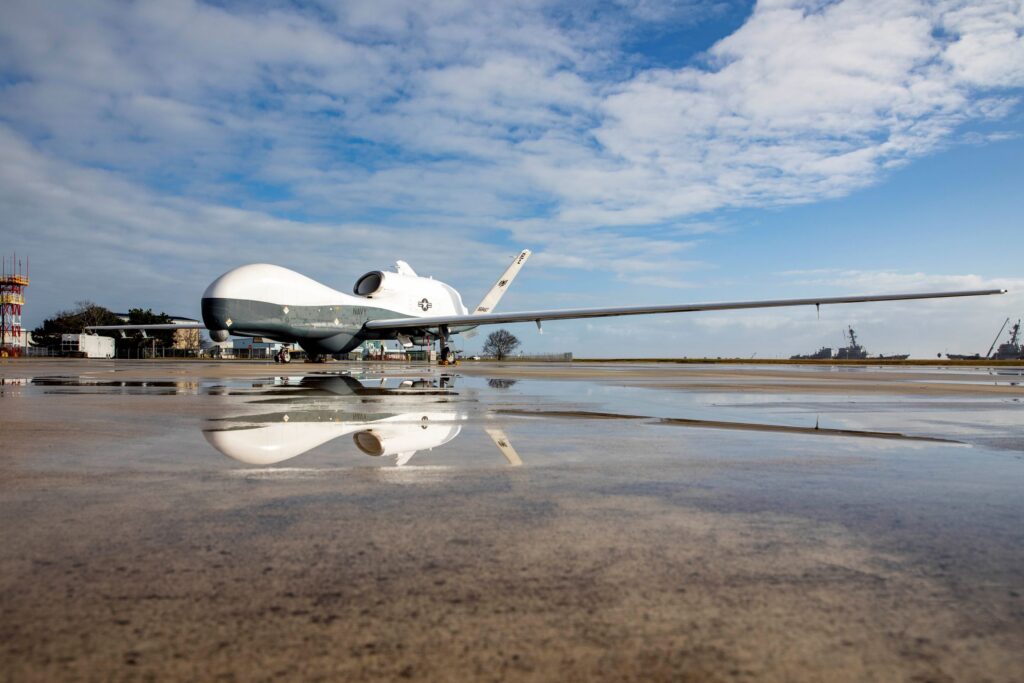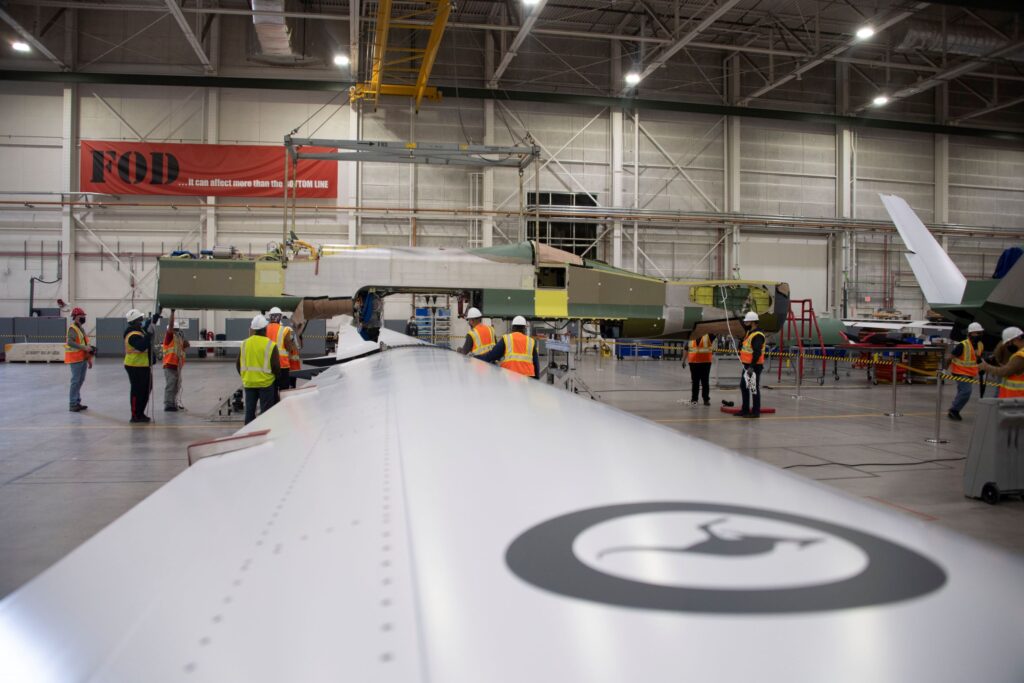
MAYPORT, Fla. — The Navy’s MQ-4C Triton unmanned aircraft system arrived in Mayport, Florida, Dec. 16, following its initial deployment in the Pacific theater, the office of Commander, Naval Force Atlantic said Dec. 17.
This air vehicle was one of two MQ-4C Triton UAS that operated from Andersen Air Force Base in Guam, after completing their first rotational deployment to Japan Oct. 12, 2021.
“The MQ-4C Triton demonstrates the significance of manned and unmanned integration to support national security interests,” said Cmdr. Brian Conlan, commander, Unmanned Patrol Squadron (VUP) 19. “The VUP-19 and MQ-4C Triton deployment to the 7th Fleet area of responsibility provided an opportunity to apply and refine the tactics, techniques, and procedures to expand our concept of operations and inform planning for future deployments around the world.”
VUP-19, the first Triton UAS squadron, operates and maintains two aircraft as part of an early operational capability to further refine the concept of operations, including expeditionary basing, and complement manned systems to better locate, identify, and track contacts of interest in the maritime domain.
The MQ-4 Triton’s arrival at Naval Station Mayport will support unit-level training and preparation for the next variant of MQ-4C.
The Navy conducted its first test flight of the MQ-4C Triton in its upgraded hardware and software configuration, known as integrated functional capability 4, July 29 at Naval Air Station Patuxent River, Maryland. IFC-4 brings an enhanced multi-mission sensor capability as part of the Navy’s maritime intelligence, surveillance, reconnaissance and targeting transition plan.
The MQ-4C Triton conducts intelligence, surveillance and reconnaissance missions that pair with the P-8A Poseidon and it brings increased persistence, capability, and capacity through its multi-sensor mission payload.

Australian MQ-4C Triton Takes Shape
Meanwhile, Northrop Grumman Corp. recently completed a significant milestone in the production of Australia’s first MQ-4C Triton when the aircraft fuselage was mounted onto Triton’s unique one-piece wing, the company said. Once completed and delivered, Triton’s powerful payload and endurance will provide the Royal Australian Air Force the ability to detect and analyze threats that were previously undetectable.
“This production milestone further demonstrates our commitment to both sides of the cooperative program between the Royal Australian Air Force and the U.S. Navy,” said Rho Cauley-Bruner, Triton program manager at Northrop Grumman. “We are on schedule to deliver Triton’s powerful capability in support of Australia’s national security.”
Australia’s first Triton is on track to be delivered just as the U.S. Navy expects to achieve initial operating capability with its multi-intelligence Tritons, the same configuration Australia is receiving. The identical capabilities will allow the RAAF and U.S. Navy to share data and maintain an unblinking autonomous intelligence, surveillance, reconnaissance and targeting capability over some of the world’s most critical maritime regions.
“I am looking forward to seeing our first Triton roll off the production line and then commence flying in Australian skies in 2024,” said Group Captain Jason Lind, director of Intelligence, Surveillance, Reconnaissance and Electronic Warfare at RAAF headquarters. “This capability will extend Australia’s ability to see and understand our maritime approaches to the north and also as far south as Antarctica.”



